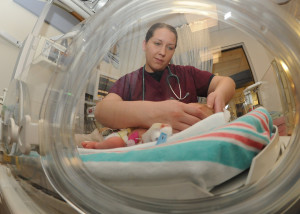Cesarean section delivery is among the most common surgical procedures. It is estimated that in 2012 alone, over 22 million cesarean deliveries were performed worldwide. Data from the National Vital Statistics show that the total cesarean section rate in the U.S. in 1996 was approximately 21%.
Since that time, there has been a rapid increase in the rate, such that in 2011, close to 1 in 3 mothers delivered by cesarean. Although the rate has leveled since then, there remains no evidence that such a significant increase has been accompanied by a concomitant decrease in maternal or neonatal mortality.
Although cesarean delivery can be life-saving for the fetus, the mother, or both in certain cases, the concern exists that cesarean delivery is overused. Hence, the matter is a global health issue. Since one of the main driving forces for the increased total cesarean rate has been a marked shift to repeat cesarean delivery following a previous primary cesarean section, a concerted effort over the past several years has been to examine closely the factors related to the safe management of the nulliparous pregnancy.
As early as 1985, the World Health Organization (WHO) stated there was no justification for any region to have a cesarean delivery rate greater than 10-15 /100 live births. Nevertheless, the rates continued to increase worldwide with no scientific evidence indicative of substantial maternal or perinatal benefit.
In fact, a number of studies have associated higher rates of cesarean deliveries with negative consequences, including increased maternal and neonatal morbidity and mortality as well as increased consumption of limited health resources by procedures without medical indications.
In March 2014, a consensus report was issued by the American College of Obstetrics and Gynecology and the Society for Maternal-Fetal Medicine on the safe prevention of the primary cesarean section. Among other points, it addressed management guidelines for the most frequent indications for primary cesarean deliveries, namely, labor dystocia, abnormal or indeterminate fetal heart rate tracing, fetal malpresentation, multiple gestation, and suspected macrosomia.
The report encouraged obstetricians to allow more time to progress through a vaginal delivery without intervention, recommended improved and standardized fetal heart rate interpretation and management, and advocated access to non-medical interventionsduring labor, such as continuous labor and delivery support.
A study by researchers at Harvard Medical School and the Stanford University School of Medicine published December 2015 in The Journal of the American Medical Association suggested that based on analyses of cesarean section rates and maternal and neonatal outcomes among 194 WHO member countries the ideal rate of childbirth by cesarean section approximates 19% of all births as opposed tothe previously considered optimal rate of 10-15%. Although the finding is higher than the former target, it remains significantly lower than the current rate in U.S. hospitals.
In its April 2015 position statement on cesarean delivery, the WHO moved away from any target rate. Rather, it emphasized that every effort should be made to ensure cesarean sections are provided to the women in need and only be performed when medically necessary.
It is gratifying that the concept of “target rate” is no longer tied to the delivery of quality medical care. Primarily due to the lack of a consistent classification system to monitor and compare different obstetric profiles, meaningful data relative to cesarean section rates is missing.
It is only when such systems as the Robson Ten Group Classification System are widely adopted by institutions that valid “risk-adjusted”cesarean section rates can potentially be developed and comparisons be made between institutions, regions, and countries.





